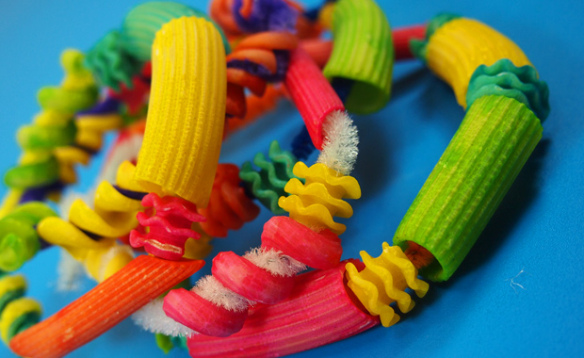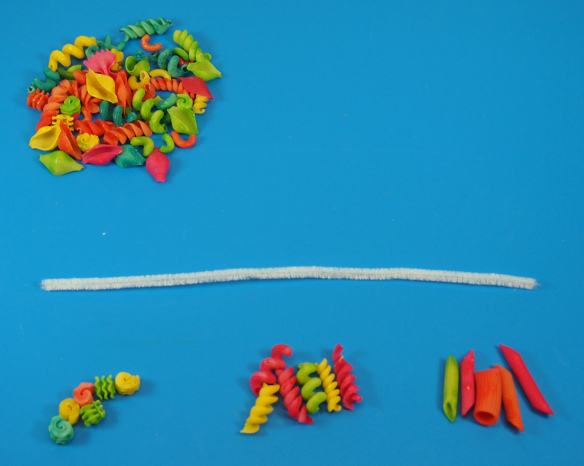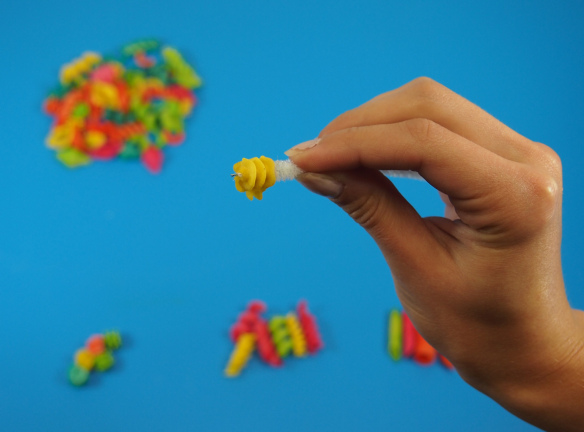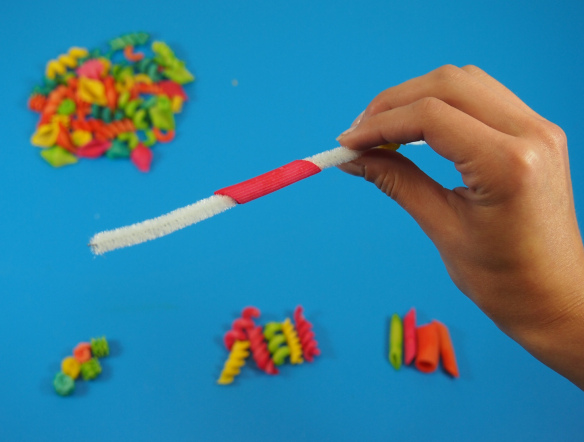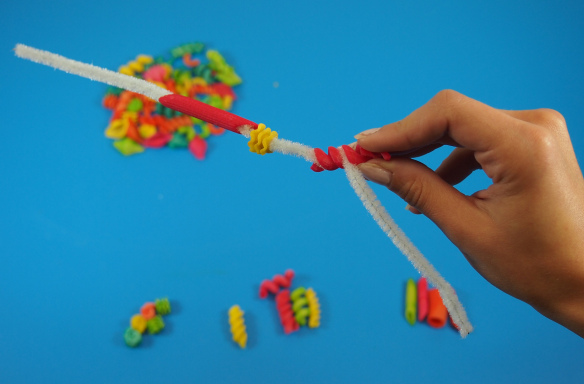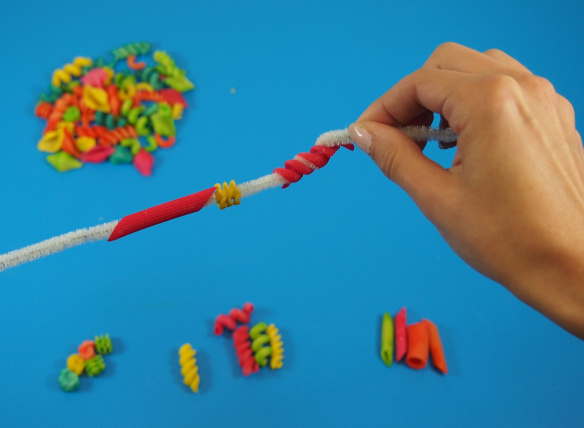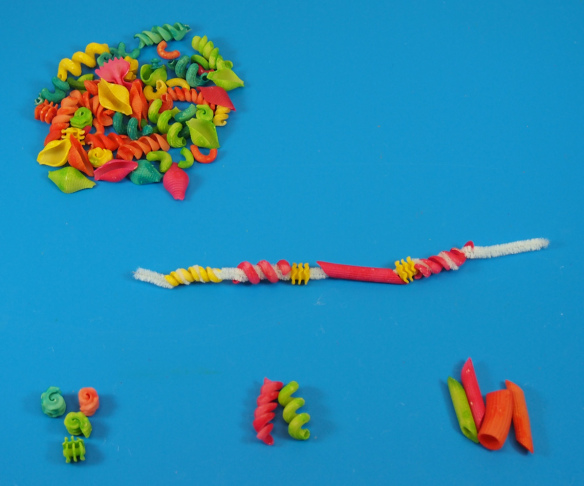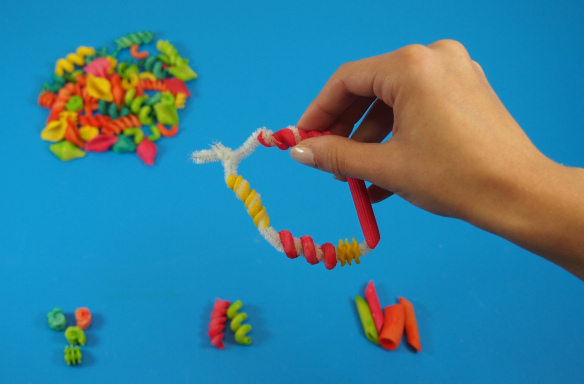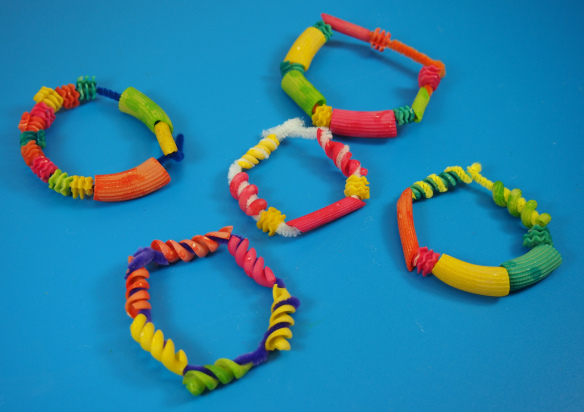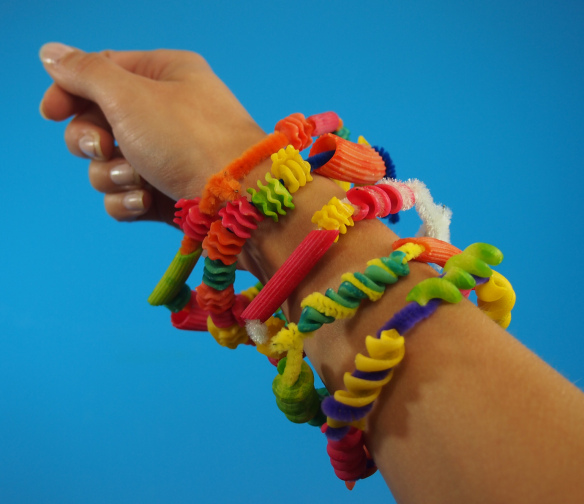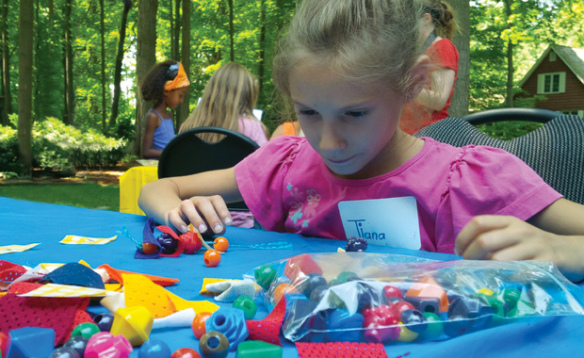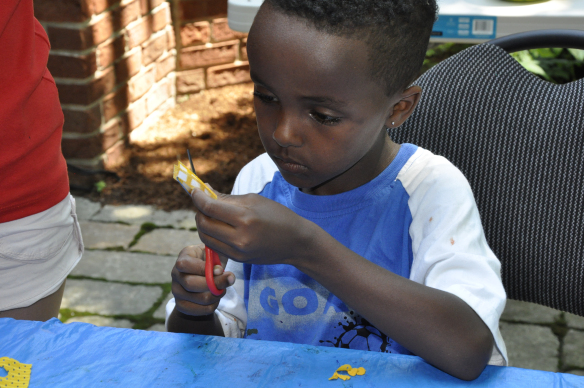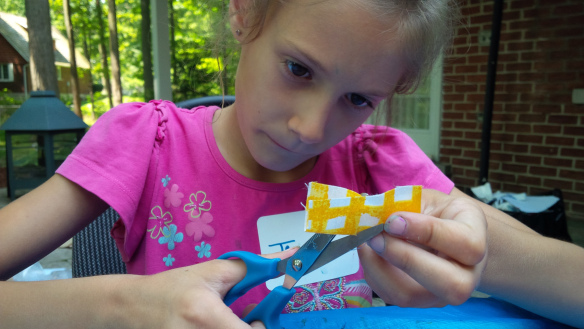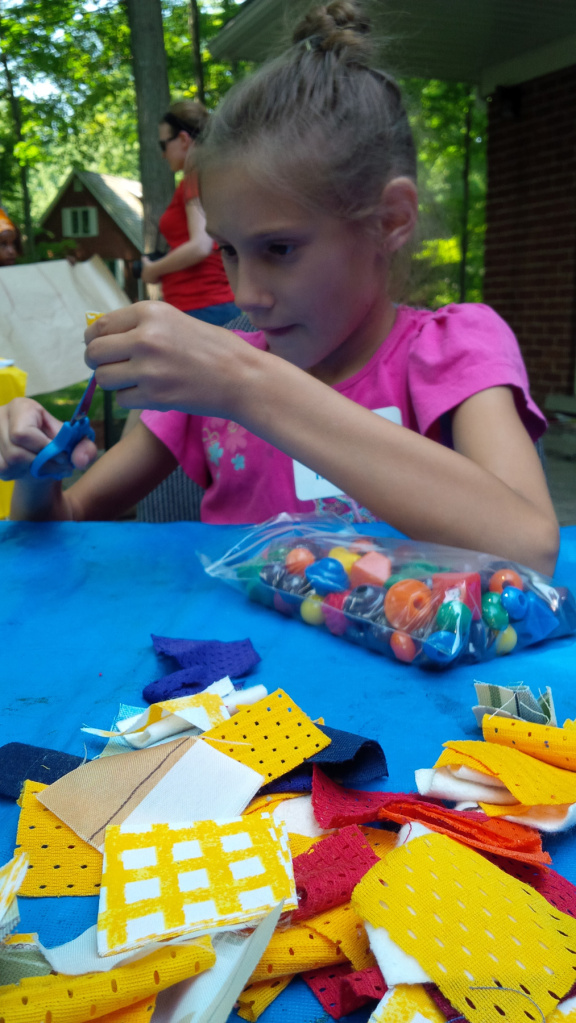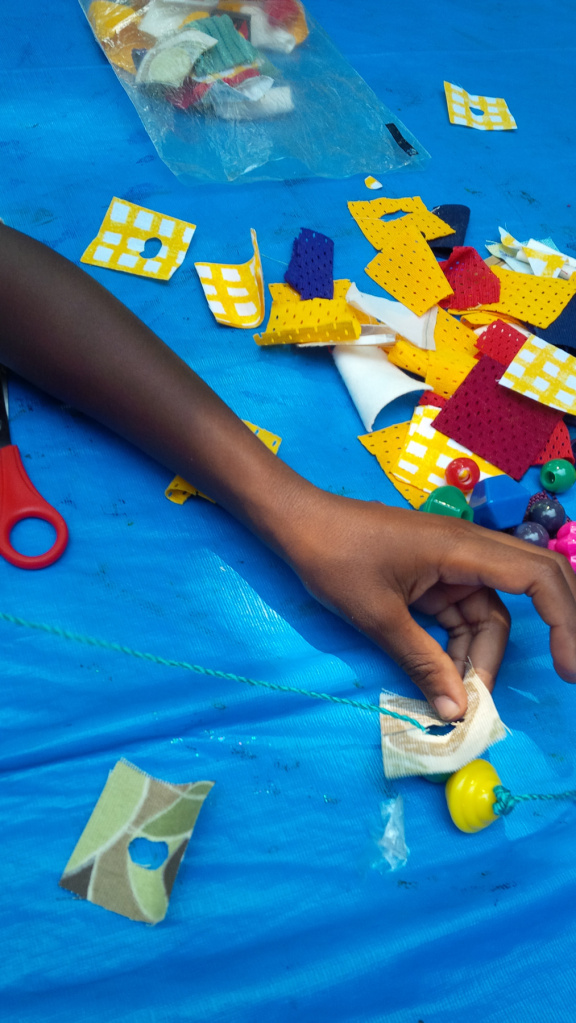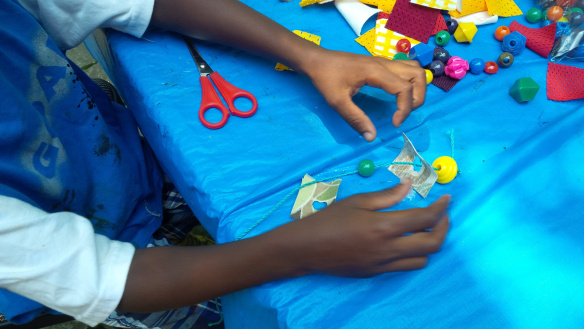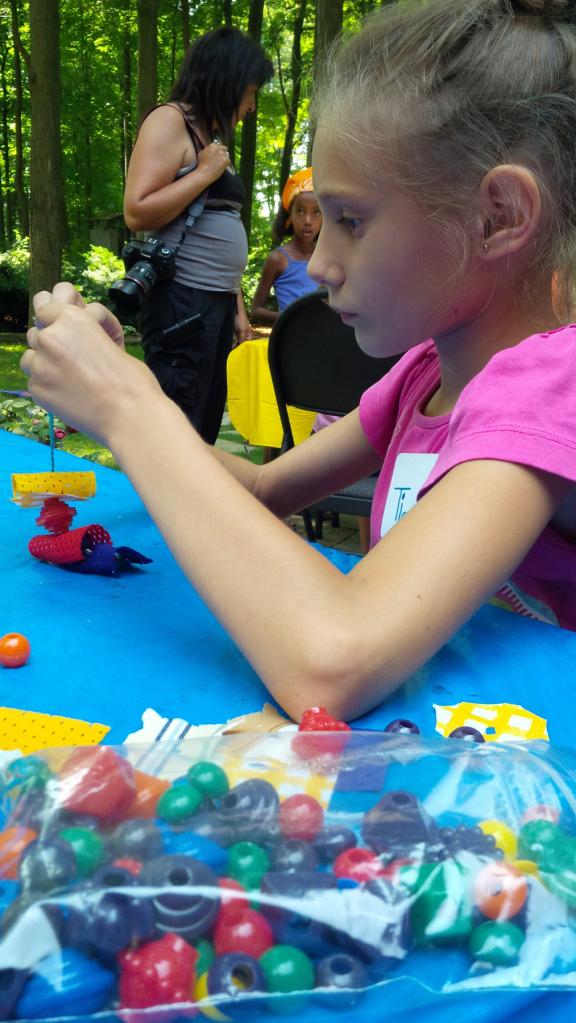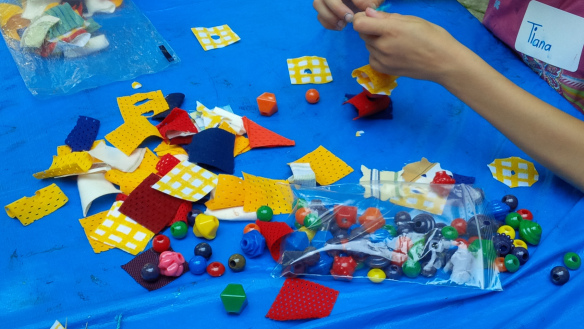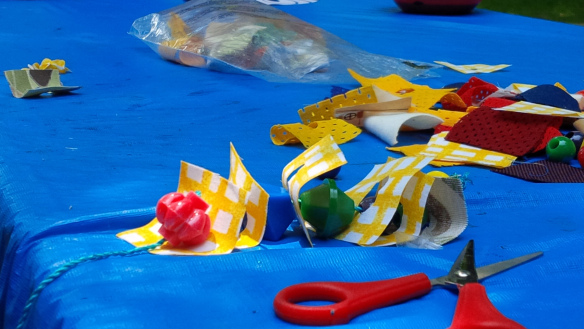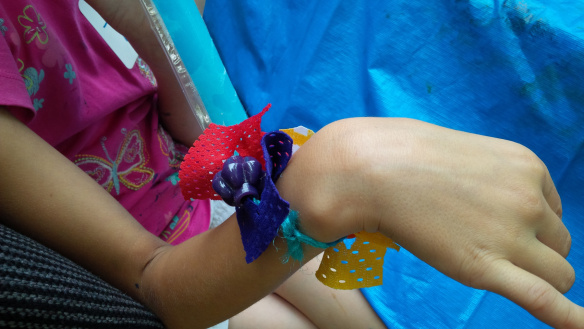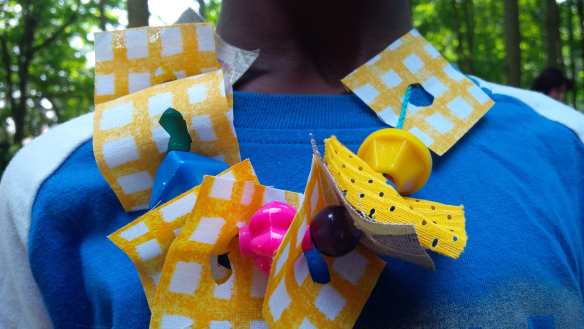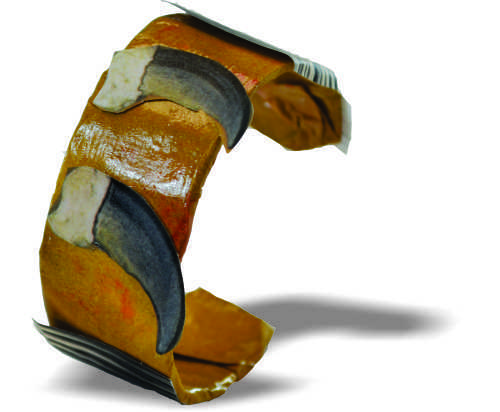
This wearable art is a terrific fashion statement!
Age: 5+
Duration: 10 minutes (excluding drying time)
Learning Outcomes: Learn about the textures and properties of natural materials through manipulation of paper and card board. Exercise fine motor skills.
You’ll Need:
- R15415 Indigenous Crafts Paper
- R39100 Wild Animal Craft Sticks
- Water
- White Glue
- R5725 Goo Spreaders
- Small, shallow tray (like the lid of an R5703 Beautiful Bin)
- Empty Play-Doh® container (or a cup of a similar diameter)
- Scissors

Before metalwork became commonplace, jewelry was made with natural materials like wood, bone, leather and porcupine quills. Bone and wood beads could be strung on leather strips, but porcupine quills have to be softened before they can be used. Additionally, rawhide can be wet down, molded and once dry will keep it’s shape. Finally, wood can be steamed to the point where you can bend it! Our version of this craft doesn’t use real rawhide, but students can experiment with paper-based versions of rawhide wet-molding and wood bending.
First cut a 2″ strip of the leather design craft paper and set it aside. You will need it later.
To start, mix a solution of 1/2 a cup of white school glue and 1/2 a cup of tap water. Warm water makes mixing easier, but cool or cold water works too. Just make sure you mix the glue in completely, so there are no gluey lumps in the solution. Once your solution is thoroughly mixed, submerge your craft stick in the mixture for up to 90 seconds. To make this process easier, we used the lid of one of Roylco’s beautiful bins!
Once the craft stick is soaked, pull it out of the solution and start to gently bend it into a circular shape. Just like traditional bending wood, your craft stick can still break if it dries out or if you bend it too quickly. Carefully place the bent craft stick inside an empty Play-doh® container so the bracelet will keep its shape. Allow to dry for at least two hours.
Once the craft stick is dry, remove it from the Play-Doh® container. Lay the 2″ strip of paper in your glue and water solution for a second or two and then gently roll the sheet over the outside of your craft stick. Fold the edges inside so the paper is smooth over top of the craft stick. This technique is similar to wet-molding, and because there is glue in your solution, the paper will be firmly glued to your craft stick once everything dries. Place the paper-covered craft stick back in the Play-Doh® container.
Once the bracelet is dry, decorate it with pencil crayon, marker, crayon or paint. Or try cutting out collage shapes from other sheets of craft paper and glue them on to your bracelet.
bundled price
to Cart

Like us on Facebook, Share this post with your friends, or Subscribe to this blog today to receive original craft project updates every week!

